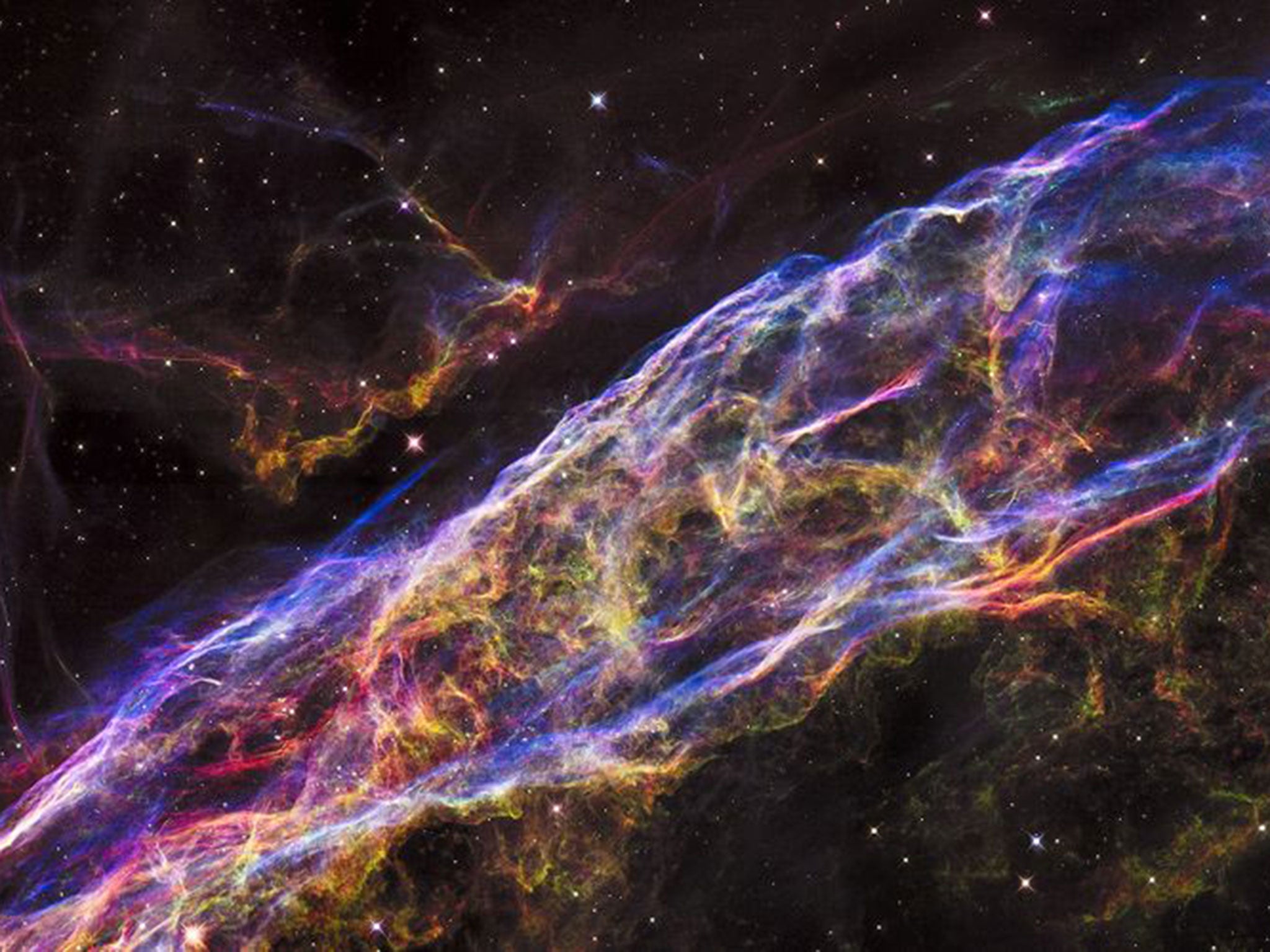Exploding star 20 times bigger than Sun captured by Hubble telescope
Nebula 110 light years across comes from supernova visible to humans 8,000 years ago

The expanding remains of a supernova 20 times bigger than the Sun have been caught on camera.
Nasa has released images and video of the Veil Nebula, which is debris from a massive star explosion 8,000 years ago, captured by the Hubble space telescope.
The nebula resembles a crumpled bed sheet viewed from the side.
The nebula, which derives its name from its delicate, draped-like structure, lies along the edge of a colossal gas bubble blown into space by the dying star prior to its self-detonation.
A kaleidoscope of colour 110 light years across is caused as a blast wave from the ancient explosion ploughs into a wall of cool, denser interstellar gas at a million miles per hour, emitting light.
A video released by Nasa, below, allows you to 'fly over' a 3D visualisation of the gas cloud.
Writing on Nasa’s blog, Ashley Morrow said: “The image shows an incredible array of structures and detail from the collision between the blast wave and gas and dust that make up the cavity wall.
“The nebula resembles a crumpled bed sheet viewed from the side.
“The bright regions are where the shock wave is encountering relatively dense material or where the ‘bed sheet’ ripples are viewed edge-on.”
In the image, which shows an area about two light years across, red corresponds to the glow of hydrogen, green from sulphur and blue from oxygen.
The Veil Nebula lies 2,100 light years from Earth in the constellation Cygnus, the Swan.
Another video created by Nasa, zooms into the nebula from the visible night sky.
The supernova that created the gas cloud would have been visible to our very distant ancestors about 8,000 years ago as a bright new star in the northern sky.
Astronomers are comparing these new images to ones taken by Hubble in 1997.
This comparison allows scientists to study how the nebula has expanded since it was photographed over 18 years ago.
Subscribe to Independent Premium to bookmark this article
Want to bookmark your favourite articles and stories to read or reference later? Start your Independent Premium subscription today.

Join our commenting forum
Join thought-provoking conversations, follow other Independent readers and see their replies